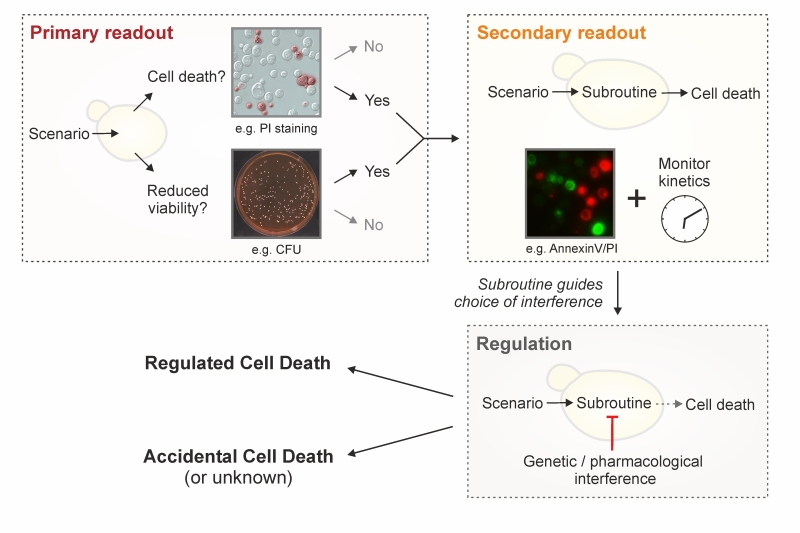Back to article: Guidelines and recommendations on yeast cell death nomenclature
FIGURE 2: Strategy to characterize yeast cell death. To define a lethal scenario in yeast, we recommend to sequentially evaluate the following three levels. (i) The occurrence of cell death should be assessed by monitoring loss of plasma membrane integrity (e.g., by staining with exclusion dyes such as propidium iodide, PI). We suggest to complement this assessment by determining viability with clonogenic tests, knowing that, in many scenarios, clonogenic capacity correlates exceptionally well with cell survival. Other viability and vitality assays may be performed to corroborate the results obtained, but do not replace these two assays. (ii) If cell death is demonstrated, the possible RCD subroutine(s) should be examined via morphological and biochemical observations. While necrotic and autophagic phenotypes demand a further clarification (inhibition studies) to conclude whether the observations correspond to an RCD modality (regulated necrosis, autophagic cell death), ACD (accidental necrosis), or a cell death correlate (protective autophagy), an apoptotic phenotype directly indicates RCD (via apoptosis). Irrespectively, it is imperative to follow the scenario over time (kinetics). (iii) Regulation per se and/or assessment of the regulatory network should be tackled by means of genetic and/or pharmacological interventions. Importantly, these interventions should inhibit or shift cell death and the observed subroutine-specific phenotypes to conclude on the involvement of an RCD modality (for regulated necrosis, autophagic cell death) and/or to provide mechanistic insight (all RCD types).

